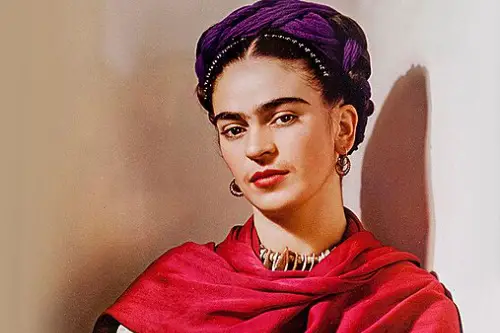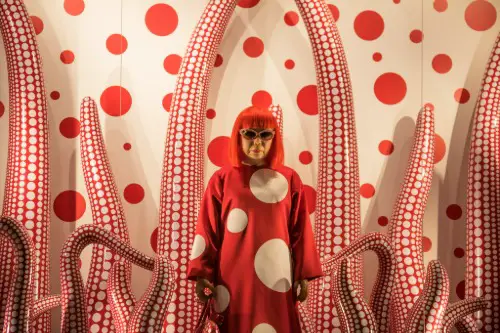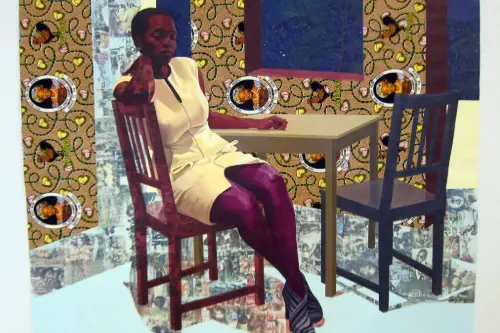When we think about power, images of boardrooms, politics, or even physical strength might come to mind. But what if the ultimate power is something quieter, more enduring? Something that has the potential to shape culture, inspire millions, and redefine what’s possible? Creativity is that power, and women artists across the globe are wielding it with grace and grit. Let’s dive into the stories of a few remarkable women who remind us that art is more than self-expression—it’s a tool for transformation.
Using Art to Rewrite Narratives

Art has always been a reflection of the world, but for some women, it’s also a way to challenge and rewrite the narratives imposed upon them. Think of the legendary Frida Kahlo. Her work is a kaleidoscope of pain, resilience, and identity. Through self-portraits that laid bare her physical struggles and emotional turmoil, Kahlo transformed her personal hardships into universal symbols of strength.
But Frida’s story isn’t just about the art itself; it’s about the audacity to create when the odds are stacked against you. She painted in a time when women’s voices were often dismissed, and yet her work didn’t just whisper—it roared. Every brushstroke was a declaration of her right to exist as she was: flawed, bold, and unapologetically herself.
In our current era, this spirit lives on in women like Zanele Muholi, a South African visual activist who uses photography to spotlight LGBTQ+ communities. Muholi’s striking black-and-white portraits reclaim dignity for those who have been marginalized, proving that creativity can also be a form of advocacy. Through her lens, art becomes a weapon for visibility and change, reminding us that creativity isn’t just about beauty—it’s about justice.
Turning Vulnerability Into Strength

If there’s one thing that unites the stories of women artists, it’s their ability to turn vulnerability into strength. For Yayoi Kusama, the renowned Japanese artist, this meant transforming her lifelong struggles with mental health into mesmerizing installations that invite us into her world. Known for her Infinity Mirror Rooms, Kusama’s art allows viewers to step into a space where endless reflections create a feeling of boundlessness. It’s a tangible manifestation of her inner world, one that could have remained hidden or misunderstood without her creative courage.
The vulnerability Kusama reveals in her art is an act of bravery. She reminds us that the parts of ourselves we fear might be too much—too complicated, too messy—can actually be our greatest source of power. Her openness about her experiences with hallucinations and obsessive thoughts challenges the stigma surrounding mental illness, proving that even our struggles can spark something extraordinary.
A contemporary parallel can be found in the music and visual artistry of Beyoncé, who, though celebrated for her glamour and success, has repeatedly pulled back the curtain on her personal life. Her album Lemonade combines music, poetry, and film to explore themes of betrayal, healing, and empowerment. By sharing her story in such a raw, creative way, Beyoncé connects with millions, proving that vulnerability doesn’t weaken us—it makes us relatable, resilient, and, ultimately, unstoppable.
The Quiet Revolutionaries

While some artists make waves with their bold statements and larger-than-life personas, others lead quiet revolutions. Agnes Martin, an abstract painter known for her minimalist, grid-like works, believed in the meditative power of simplicity. Her pieces might not scream for attention, but they hold an almost spiritual presence that invites viewers to pause, breathe, and find solace in their own stillness.
In a fast-paced, noise-filled world, Martin’s art is a reminder that power doesn’t always have to be loud. Sometimes, it’s found in the deliberate choice to go against the grain, to embrace quietness and introspection in a society that glorifies hustle and chaos. Her dedication to her vision—despite living in near isolation and away from the mainstream art world—demonstrates that creativity isn’t about fitting in; it’s about staying true to yourself.
Similarly, the Nigerian-American artist Njideka Akunyili Crosby brings subtle but potent power to her work. Her large-scale paintings layer images of her family, Nigerian pop culture, and her American surroundings to explore identity, belonging, and cultural hybridity. Crosby doesn’t need grand declarations; her art speaks volumes through its intricate details, inviting viewers to reflect on the nuances of their own identities.
Both Martin and Crosby remind us that creativity is as much about listening as it is about speaking. Through their art, they show that introspection and connection can quietly but profoundly reshape the world.
Why Creativity Is the Ultimate Power Move
The women artists we’ve explored here—Kahlo, Muholi, Kusama, Beyoncé, Martin, Crosby—span different mediums, cultures, and time periods, but they share one thing in common: they’ve used creativity to claim their power and, in turn, empower others. Their art isn’t just about self-expression; it’s about changing perspectives, challenging norms, and imagining new possibilities.
And isn’t that what power really is? It’s not about domination or control. It’s about influence—the ability to make people think, feel, and see differently. Creativity, at its core, is an invitation to imagine the world not as it is, but as it could be. When women wield this power, they remind us that strength isn’t just about force—it’s about transformation.
So, the next time you pick up a paintbrush, a camera, or even a pen, remember: you’re tapping into one of the most profound forms of power there is. Whether you’re creating for yourself, for others, or for the sheer joy of it, you’re proving what these incredible women have shown us time and again: creativity isn’t just a gift. It’s a revolution.
